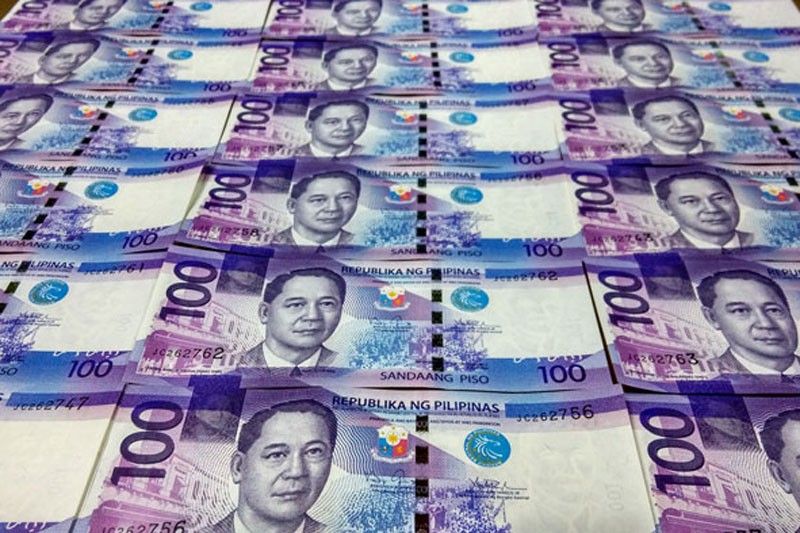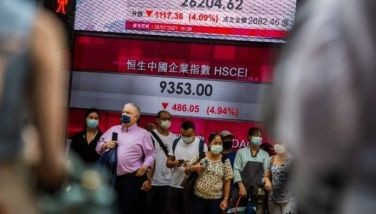DBCC hikes share of foreign loans in debt portfolio

MANILA, Philippines — The Development Budget Coordination Committee (DBCC) has increased the approved share of foreign borrowings in the country’s total loan portfolio for 2018, allowing the government to tap more foreign markets and diversify its funding sources.
After the DBCC’s 172nd meeting yesterday, Budget Secretary Benjamin Diokno announced the financing program for fiscal year 2018 would now follow a 65-35 mix, in favor of domestic borrowings.
This shows an adjustment from the 74-26 borrowing mix approved by the same committee during its previous meeting last December 2017.
For fiscal year 2019 to 2022, the DBCC said the government would follow a financing mix of 75-25.
Earlier, economic managers said they wanted 80 percent of the government’s obligations to come from domestic loans, and the remaining 20 percent to be sourced from foreign lenders.
However, the DBCC said it has decided to trim the share of domestic borrowings due to the pre-funding activity made by the Bureau of the Treasury late last year. This refers to the sale of P255 billion worth of Retail Treasury Bonds to small investors.
“With the pre-funding exercise in the sale of Treasury bonds in fiscal year 2017, there is lower requirement for local financing in 2018,” the DBCC said.
Diokno said the increase in foreign financing, meanwhile, would be accounted for by official development assistance (ODA) from the country’s development partners in the region.
He said China and Japan are competing to give good ODA packages to the Philippines. He cited the ¥104.53 loan offered by Japan for the first phase of the Metro Manila Subway Project, which carries a 0.1 percent interest, payable in 40 years. He said China is also offering loans with interest of as low as two percent.
Diokno said South Korea has also offered funding assistance to the country.
The national government borrows from both local and foreign creditors to plug its fiscal deficit and to pay for maturing debt.
For 2018, the budget deficit is programmed to reach P523.68 billion, or equivalent to three percent of gross domestic product.
Revenue, for its part, was adjusted upward to P2.846 trillion from the previously approved level of P2.789 trillion. The increase was attributed to the impact of Package 1A and 1B of the Comprehensive Tax Reform Program (CTRP).
Package 1A, as contained in Republic Act 10963 or the Tax Reform for Acceleration and Inclusion (TRAIN) Law, was implemented starting Jan. 1. Package 1B, for its part, is expected to be passed in the middle of the year, Finance Assistant Secretary Ma. Teresa Habitan said.
Combining both packages, the government is expected to generate P124.9 billion in additional revenue for 2018.
“The projected increase in the government’s revenue take arising from the implementation of the TRAIN Law and the succeeding packages of the CTRP strengthen the good fiscal position of the Duterte administration, which will let it pursue an aggressive investment policy anchored on much higher spending on infrastructure and human capital development over the medium term,” Finance Secretary Carlos Dominguez said.
The disbursement program for 2018 was likewise increased to P3.37 trillion in 2018 from the previously approved level of P3.31 trillion, in light of the favorable revenue projections.
“The improved fiscal program of the government, particularly the Build Build Build initiative, is expected to boost economic expansion for 2018 to 2022. We are on track to hit our fiscal targets especially with our shift to cash-based budgeting starting 2019,” Diokno said.
The DBCC, during its meeting yesterday, also maintained the government’s economic growth target in the medium term at seven percent to eight percent.
Inflation target was likewise maintained at two percent to four percent in the next five years.
However, foreign exchange projections were revised upward, ranging from 50 to 53 to $1 in 2018 to 2022, from the previous assumption of 49 to 52 against the dollar.
- Latest
- Trending





























